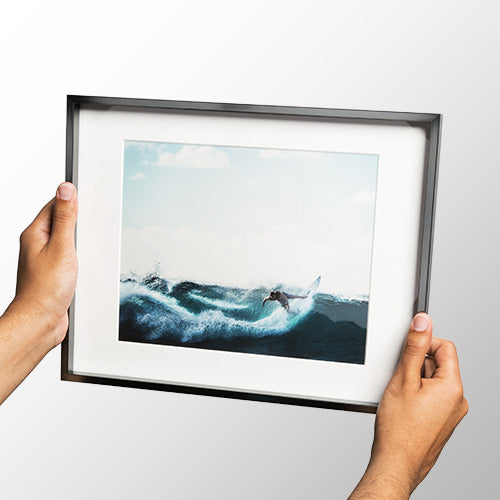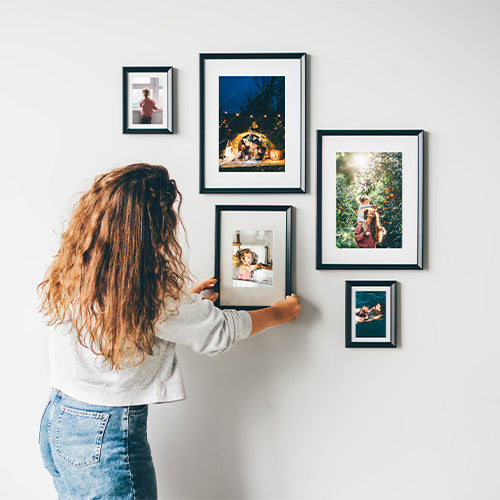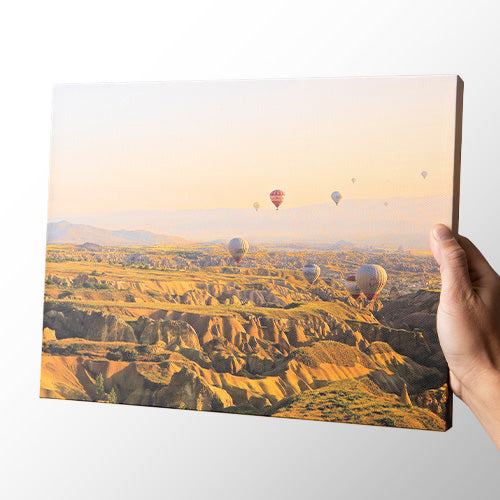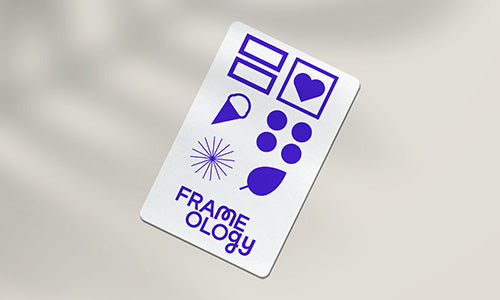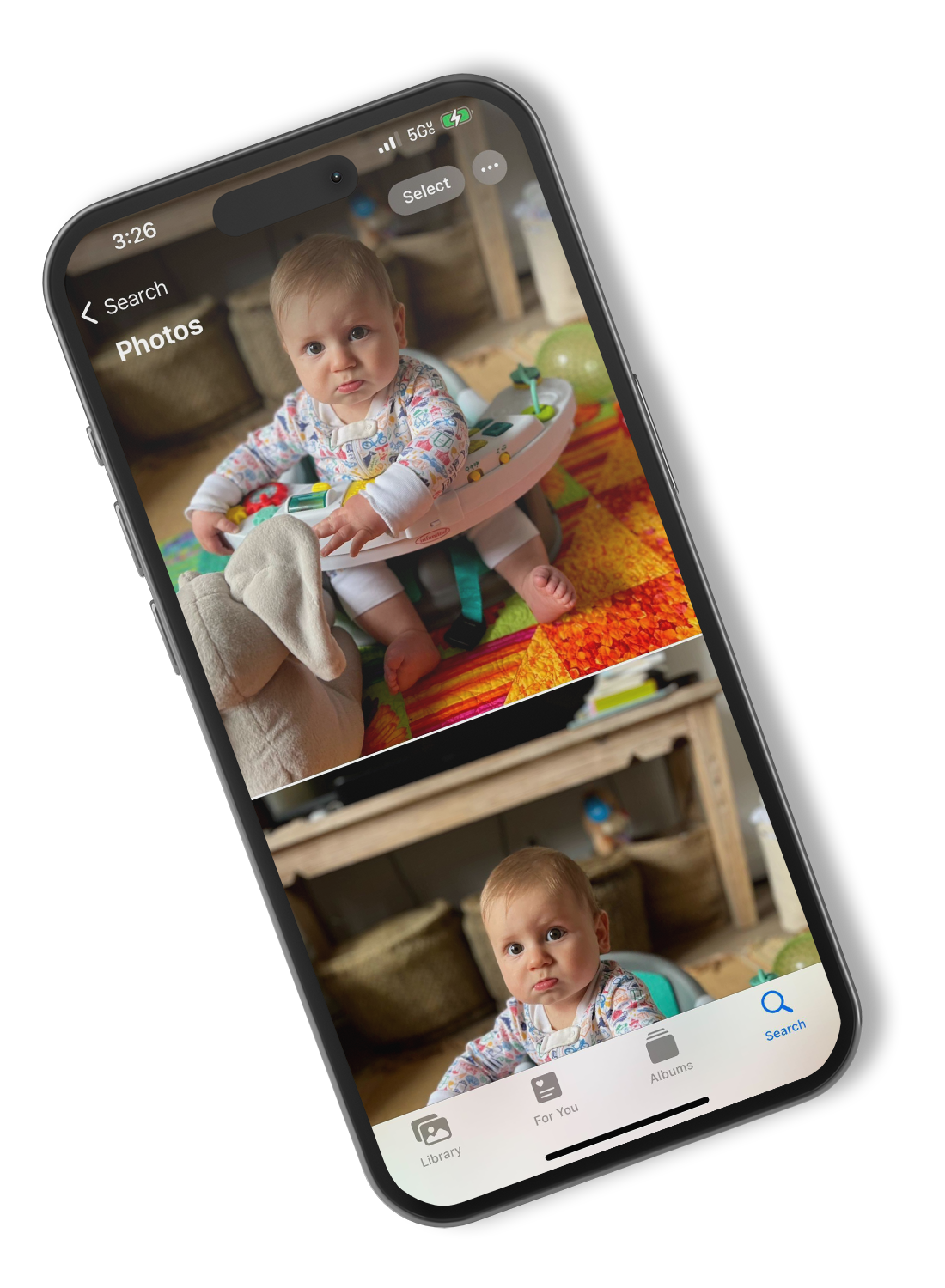The power of nostalgic pictures and how they ignite positive emotions
You know that feeling when you stumble across a childhood photo or vacation pictures from years ago and you feel a wave of happiness rush through you? Maybe you smile. Maybe your shoulders drop a little, and suddenly you feel a little calmer. That’s not just coincidence, it’s what we like to call emotional time travel: the ability of old photos to transport you back to happier, more peaceful moments. Revisiting nostalgic photos doesn’t just feel good — it can actually lead to measurable emotional and psychological benefits. We’re talking reduced stress, boosted mood, and even potential therapy applications.
In honor of Mental Health Awareness Month, we wanted to do a deep dive to find out how looking back on old photos is good for your mental health. We'll explore findings from a recent Fujifilm survey conducted in 2025 and a 2018 study by the International Journal of Environmental Research and Public Health that digs into just how powerful nostalgic pictures really are.
How the brain processes nostalgia
Let’s start with the basics: what does “nostalgia” mean? Most of us think of it as that warm, fuzzy feeling we get when remembering the good ol’ days. But from a psychological standpoint, nostalgia is a bit more layered. Nostalgia is a deeply emotional experience that connects us to meaningful past moments. It often involves people we love, milestones we’ve reached, or places that feel like home. So, is nostalgia an emotion? Well, sort of. It’s a blend of emotions — including joy, longing, and comfort — all wrapped up in one. And it turns out, this emotional cocktail actually plays a helpful role in regulating how we feel.

What’s happening in our brains during all this? When you look at an old photo, your brain kicks into memory-recall mode. This lights up areas linked to emotional processing, most notably the amygdala — which handles stress and fear — and the prefrontal cortex, which helps regulate emotions and decision-making. Think of the amygdala as your internal alarm system, and the prefrontal cortex as the calm friend who tells it to chill out. When these regions of the brain interact while looking at or thinking about a comforting memory, it can trigger a calming effect, which can lower stress levels and create that lovely feeling of peace.
How Americans experience photo-based nostalgia
In March 2025, Fujifilm North America published a “Frame of Mind” survey to explore how Americans connect with their old photos, and the results were heartwarming. Here are a few notable takeaways of Fujifilm’s survey:
-
3 in 4 of Americans say that looking at old photos brings them happiness and calm
-
58% of respondents share that looking at old photos can reduce anxiety while 49% of them also shared it helps people feel uplifted
-
8 in 10 of respondents believe displaying photos in their living spaces contributes to greater happiness and comfort
That says a lot, particularly about 80% of respondents displaying physical photos at home. The survey also shares, “Nearly 3 in 4 Americans (71%) agreed that looking at their own photos brings more happiness than scrolling through social media.” Even in our ultra-digital world, there’s something about a printed photo that just hits different. Sure, scrolling through your phone gallery can feel nice, but admiring a framed photo on your desk or flipping through a homemade scrapbook of memories? That’s grounding.
Many people utilize printed photos in beautiful ways: from keeping a framed photo of your travels at your desk, displaying a gallery wall of life’s biggest milestones like your wedding or maternity photos, or simply placing a childhood snapshot on the fridge to start your mornings with a smile. These physical photos offer real emotional support. They’re visual reminders of who we are, where we’ve been, and what truly matters.
A peer-reviewed look at structured nostalgia
After examining how simply looking at happy photos can reduce anxiety, it’s no surprise that researchers have explored more intentional ways to tap into those benefits. What if there were a method to use personal photos as a regular part of your mental wellness routine — not just during tough moments, but as a proactive practice?
That’s where the Positive Photo Appreciation (PPA) Program comes in. The International Journal of Environmental Research and Public Health published a peer-reviewed study introducing this structured approach, encouraging people to reflect on meaningful photos while gratitude journaling and following guided prompts. The study involved 55 participants between the ages 65 to 84 years old between December 2016 to March 2017. The results were pretty encouraging, as participants in the PPA program reported an improvement in overall mood, increased positive emotions, and heightened feelings of gratitude by the end of the study.
One of the guided prompts that participants had to do as daily homework included recalling three scenes that they enjoyed each day as though it were a photographic image. So whether you’re reflecting on what a photo represents or looking at a physical copy and asking yourself why it makes you feel grateful, nostalgic viewing proves to be a simple but powerful wellness habit.
And it wasn’t just a one-time perk, as those who regularly practiced what they learned during the PPA program experienced sustained benefits over time. That means these effects aren’t just fleeting — they can build into long-term emotional strength. Researchers even suggested that this approach has therapeutic potential for people dealing with anxiety and depression. Therefore, a simple picture used in the right way can surprisingly become an incredible tool for healing.
How to harness the benefits of photo-based reminiscing
If you’re wondering how you can use nostalgic photos to boost your own mental well-being, try these simple ideas you can incorporate in your daily life:
-
Display framed photos. Surround your home and your workspace with framed memories that make you smile. Remember: it’s not just decor. With 8 in 10 of respondents sharing that physical photos can contribute to greater happiness, it’s the best kind of emotional fuel you can surround yourself with in your everyday life.
-
Make a gratitude gallery wall. Hang up snapshots of people, places, and memories you’re thankful for. Choose a ready-to-hang gallery wall layout that matches your space, or opt for one of our sets that comes with a gallery wall template that makes upgrading your walls a breeze!
-
Journal with photos. Pair an image with a quick journal entry. You can include what you were doing, who you were with, what it felt like. These entries can range from a couple sentences long to a paragraph, so you can look back on those memories in greater detail as years go by.
-
Create a “feel good” album. Whether digital or printed, curate a collection of photos that make you feel happy, calm, or proud. These can include anything that brings back a little childhood nostalgia or recent photos from your most cherished memories!
Nostalgic photos aren’t just sentimental, they’re psychologically powerful. They ground us and lift us up at the same time, but remind us that even on tough days, we’ve had joy — and we’ll have it again.
